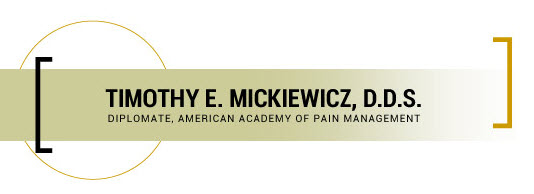
In the recent past, orthodontics for adults (like Invisalign®) made a major splash in the dental community. These solutions allowed older patients to address dental misalignments that they acquired during childhood. But, prioritizing orthodontics for children as they are growing may be the best way to avoid jaw and dental misalignments in the future.
Whether you want to seek orthodontia for yourself or your little ones, there’s no time like the present to get started. Dr. Timothy Mickiewicz can help you begin the process of orthodontics for children (or yourself!) at an in-depth consultation in Sacramento, CA. Get scheduled now by submitting a request here or by calling (916) 469-9178.
In today’s blog post, Dr. Mickiewicz answers some of your questions about orthodontics for children. Understanding the merit of early intervention could help you give your children the smiles they deserve well into adulthood.
When should I seek orthodontics for children?
Every patient is different, so there may not be a ‘right’ age for early orthodontic intervention. However, the American Association of Orthodontists recommends beginning orthodontics for children as young as six or seven years old.
We know what you might be thinking–isn’t six years old a little young to get braces or Invisalign? Surprisingly, this may be the perfect time to begin straightening your child’s smile.
Orthodontists frequently call early orthodontic intervention ‘phase one treatment’. Typically, phase one treatment occurs when patients are between the ages of six and nine. At this point in their development, most children have a decent mix of permanent and baby teeth.
Why should my child have straight baby teeth?
Orthodontics for children work by adjusting misalignments as they occur during your child’s development. So, rather than fixing issues after your child’s permanent teeth settle in, phase one treatment allows your child’s orthodontist to fix them as they happen.
While it may seem unnecessary to straighten baby teeth, it may be the best way to give permanent teeth enough room to erupt into the mouth.
Baby teeth act like a guide for permanent teeth. But, if baby teeth are not in the right position, then permanent teeth may grow into the mouth at odd angles or without enough room. The result can be painful malocclusions, oral dysfunction, and orofacial myofunctional disorders.
So, even though your child will lose their baby teeth, straightening them now could help create a healthier, more comfortable permanent smile in the not-so-distant future.
What if my child is too old for phase one treatment?
It’s true that phase one treatment is usually reserved for children aged six to nine. But, age usually has very little to do with one’s candidacy for orthodontia. So, if your child has all of their permanent teeth, then they may not be eligible for phase one treatment. However, they may be ideal candidates for phase two orthodontic treatment.
Phase two treatment usually occurs after all of your child’s permanent teeth erupt. It may take a little longer to straighten your little one’s smile after they acquire all of their adult teeth. But, their skeletal systems are still more pliable than adult skeletal systems. So, orthodontists can straighten misalignments much easier in teens than in older adults.
The takeaway message here is this: nobody is too old for orthodontics, and effective phase two orthodontics for children between the ages of 12 to 14 exist.
Are there different types of orthodontics for children other than metal braces?
Yes, there are several orthodontic solutions to fix a myriad of alignment and spacing issues in children and teens, including:
- Permanent and removable retainers
- Clear and metal braces
- Clear aligners
- Lip bumpers
- Palatal expanders
- Positioners
- Bite planes and splints
- Forsus™ springs
- Herbst® appliances
- Headgear
- Orthodontic separators
- Twin block appliances
A thorough exam can help you and Dr. Mickiewicz choose the best orthodontic solutions for your child.
How can I get my child to adhere to their treatment plan?
Perhaps the only semi-negative aspect of orthodontics for children is getting them to properly adhere to their treatment plans, especially traditional Invisalign treatment plans.
Many orthodontists combat this by installing permanent appliances rather than supplying young patients with removable appliances. So, rather than Invisalign, your child’s orthodontist may recommend metal braces instead.
Nevertheless, many reputable brands (including Invisalign) are developing child-friendly orthodontia to help younger patients adhere to their treatment plans. For example, Invisalign launched teen aligners that have a very discreet blue dot on them.
The blue dot serves as an indicator of total time worn, as Invisalign trays must be worn for a minimum of 20 to 22 hours daily. If your child is wearing their aligners for the prescribed amount of time, then the dot fades slowly over two weeks. If they are not wearing their aligners properly, then the blue dot remains after two weeks.
While these child-friendly solutions are helpful, they may not be enough to encourage proper treatment compliance. You can help your child adhere to their treatment plan by:
- Setting daily reminders in your phone and/or their phone
- Creating a tangible tracking system, like a sticker chart or family calendar
- Rewarding children for proper treatment adherence (we recommend fun activities or quality time over sweet treats!)
- Helping them adjust to their new-found responsibility by conducting daily oral hygiene together
How much do orthodontics for children cost?
The costs of orthodontics for children are highly variable. Factors like the orthodontist’s geographic location and experience can influence pricing, as well as treatment types and timelines. And, of course, insurance coverage can make a noticeable difference in the overall costs of orthodontia.
Nevertheless, here are average prices for common orthodontic treatments without insurance:
- Traditional braces: $3,000 to $10,000
- Invisalign: $3,000 to $7,000
- Retainers: $100 to $500
- Palatal expanders: $1,000 to $2,500
- Headgear: $1,000 to $9,000
Schedule a Consultation for Orthodontics in Sacramento
Are you ready to explore orthodontics for children and adults? Contact Dr. Timothy Mickiewicz in Sacramento, CA, for a comprehensive consultation. All patients (even new patients!) can reach us here or at (916) 469-9178 for scheduling and more.


